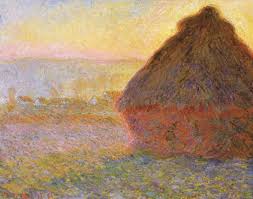 I’ve just come back from a long trip to Australia; hence the lack of posts on this site in recent weeks. While I was away, one issue kept on cropping up. Can wine quality be assessed objectively? This isn’t the vinous equivalent of asking how many angels can dance on the head of a pin. It has a bearing on whether – and to what extent – you should be influenced by the opinions of the various critics and merchants when you buy wines.
I’ve just come back from a long trip to Australia; hence the lack of posts on this site in recent weeks. While I was away, one issue kept on cropping up. Can wine quality be assessed objectively? This isn’t the vinous equivalent of asking how many angels can dance on the head of a pin. It has a bearing on whether – and to what extent – you should be influenced by the opinions of the various critics and merchants when you buy wines.
I spent the last week of my visit touring Australia’s wine-producing regions with a coachload of fellow MWs. In order to pass our tasting exams, we were all required to put aside personal preferences and come to an objective (or near as dammit) assessment of the quality of wines presented to us blind. So, in theory, when it came to rating the wines we were tasting, we should have all come to more or less similar conclusions.
And yet, every time I climbed back onto the coach, I heard opinions that ranged from extreme disappointment/visceral dislike to vociferous excitement/enthusiasm. Although this was true across the board, no wine polarised opinion to quite the extent of the Chardonnays tasted in Victoria’s Yarra Valley.
There’s been a bit of a winemaking revolution in Australia in recent years, and nowhere is this better expressed than in the country’s Chardonnays (a grape whose style is heavily influenced by decisions taken by the winemaker). In the past, Aussie Chardonnays were renowned for their rich, ripe fruit, their lush texture and their lavish oak. It was rare to come across one of these wines with less than 13.5% alcohol, and 14.5% was not unheard of.
Of late, however, fashions have changed. Grapes are being picked earlier, resulting in wines that are linear and crisp rather than buxom, and whose flavour expression has drifted closer to citrus and orchard fruit instead of full-on tropical richness. Alcohol levels have dropped towards the 12.5-13.5% abv range. Many winemakers, inspired by Burgundian producers, are in thrall to reductive winemaking styles, and their wines have a characteristic nose reminiscent of a struck match (smoky and slightly sulphidic).
Some of my colleagues were less than thrilled. Dermot Nolan MW gave voice to their criticisms on his blog, saying that
‘Very few of the MWs on the trip liked the ultra-intellectual wines offered in Yarra’
and that
‘Many MWs agreed that these wines were, in essence, charmless’ .
I disagree on both counts. What I saw was that a good proportion of the younger members of our group, as well as many of those most familiar with the contemporary Australian wine scene, were rather taken by these restrained Chardonnays.
And, just as our trip was winding down, Jancis Robinson MW (who was not on the trip with me, but had conducted some recent tastings of Australian wines) posted an article extolling the virtues of new-wave Australian Chardonnays, in which she refers to the same wines as
‘The new Pulignys of Australia’
and says that she is
‘Now looking for serious alternatives to fine white Burgundy in the cooler reaches of Australia’.
So, if m’learned colleagues’ opinions are so at odds with each other, whose judgement can you trust?
The answer, I think, comes with another (brief) digression. When Monet and Renoir first showed their paintings, they were dismissed by the critics of the time as ‘painters of mere impressions’. The first performance of Stravinsky’s The Rite of Spring was dissed as ‘The work of a madman… Sheer cacophony’ by his fellow composer Puccini. And, famously, the A&R man at Decca rejected the Beatles, saying that they had ‘no future in show business’.
In short, the opinions of critics in all fields are really just personal viewpoints that may come back to bite the critic in the arse over time.
When it comes to finding someone to give you guidance about wine, then, you have to acknowledge that wine critics are subject to the same advantages and disadvantages as critics in other fields. By and large we have a greater exposure to a wide range of wines than most wine lovers. This puts us in a better position to have an overview of the relative quality of the wines we taste. Nevertheless, we are still subject to influences – among them our own personal preferences, the opinions of our peer group and changing fashions– that colour our judgements.
No one wine pundit is ever ‘right’, whatever right is, so find one whose tastes have something in common with your own. After all, you wouldn’t take the advice of a film writer who goes into raptures about the latest Bond if your tastes tended towards new-wave arthouse flicks, would you? If you only favour boldly flavoured, high-alcohol reds, don’t bother logging on to a site that frequently raves about restrained, linear whites. If your palate is fairly conservative, you’re best off finding a wine writer who is similarly disposed. Those interested in pushing their wine envelope just that little bit further are better off finding themselves an expert who’s inclined to take an occasional walk on the wild side. And if, on occasion, you find yourself at odds with your chosen critic, don’t fret about it too much. You may have just developed a taste for the wine world’s equivalent of Philip Glass.
